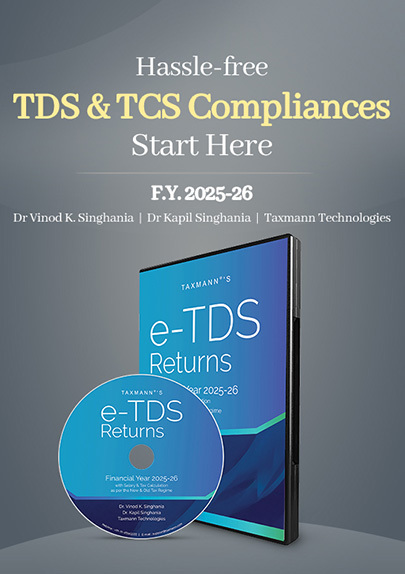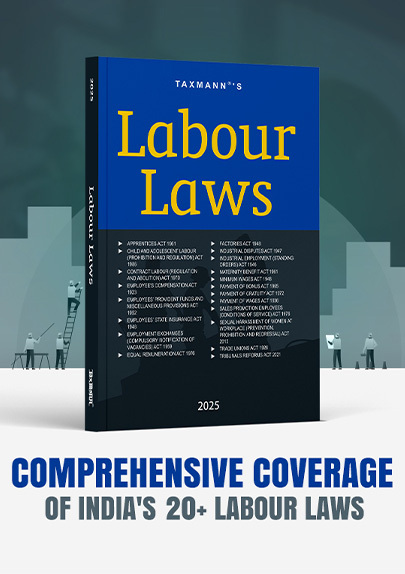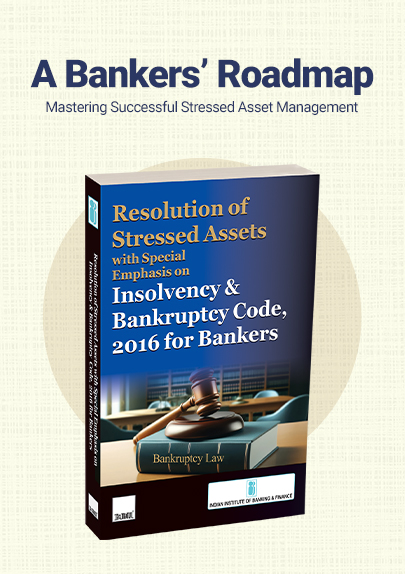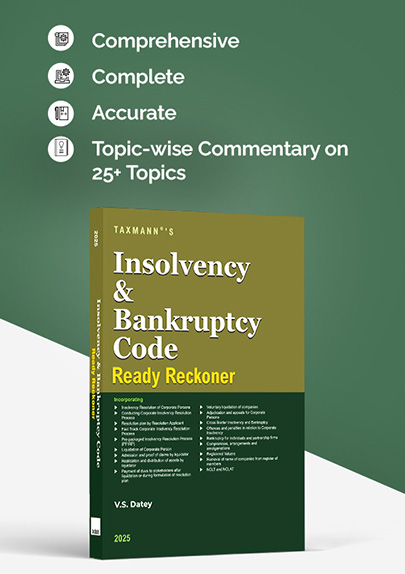Secondment Arrangements and GST – What Businesses Need to Know
- Blog|GST & Customs|
- 15 Min Read
- By Taxmann
- |
- Last Updated on 13 November, 2024
GST on secondment arrangements refers to the applicability of GST on the practice where a company temporarily transfers or "seconds" an employee to work in another group entity, often across borders. Under GST law, such secondments may be considered a "supply of service," which can attract GST if deemed a taxable supply between related parties. Although the employee typically remains on the original employer’s payroll, the host entity usually reimburses the salary costs, which tax authorities may interpret as consideration, making the arrangement taxable. However, if the employee’s work is classified as an employer-employee relationship in the host entity, GST may not apply. Legal rulings and GST provisions underscore the importance of structuring these arrangements to determine tax applicability accurately.
Table of Contents
- Introduction
- Issues in GST
- The Employer-Employee Relationship
- Judicial Interpretation
- OECD Model Tax Convention, 2014
- Reversal of Trend of Judicial Interpretation
- Conclusion
Checkout Taxmann's GST Issues – Decoding GST Issues & Litigation Trends which is a definitive guide to understanding the complexities of India's GST law, focusing on key features that address constitutional challenges, critical transactional disputes, core GST concepts, and robust enforcement mechanisms. It provides detailed analysis backed by landmark judgments, statutory provisions, and practical insights for resolving real-world legal issues. It covers technology-driven compliance challenges, such as GSTN-related issues, and provides comprehensive guidance on enforcement actions, legal remedies, and judicial interventions.
1. Introduction
After the advent of globalization, businesses started transforming into corporate setups at a large scale and branched out not just into their origin country but also internationally1.
With the increasing competition in the Indian markets, MNCs have been setting up offices in India for which they require experienced and skilled personnel to manage and operate their Indian office affairs. In order to do so they generally hire from the large pool of talented and skilled personnel available locally or sometimes they acquire/transfer their employees from their sister organisations or associated groups of companies, either locally or internationally. Companies generally need these kinds of employees for a longer duration, therefore in the case of expats, they depute their employees to the Indian offices for a temporary duration while preserving their original employment status with the foreign holding company. This kind of transfer is known as Secondment2.
The terms and conditions and various facets of Secondment are decided by a Secondment Agreement. A secondment agreement is typically an agreement between the associated group entities, wherein one of the entities, known as the ‘Seconder’, undertakes to transfer one or more of its employees, known as the ‘secondee’, to the other entity, known as the ‘host’, for performing specific functions. Typically, the host Company also issues an employment letter to the secondee and takes him on its payroll. However, generally, the employment with the seconder also continues for social security and other regulatory purposes. The salary to the employee is typically paid (partly or in full) by the seconder and in turn is reimbursed by the host organization on cost-to-cost basis. The employment duration, compensation terms, nature of work, etc. of these seconded employees are not standard and are subjective to the arrangement between the parties.
2. Issues in GST
It may be relevant to elaborate on the relevant provisions under the GST regime. The term supply is defined under Section 7 of the CGST Act in a very wide manner to include all forms of supply of goods and services. Further, the term ‘service’ is defined under Section 2(102) of the CGST Act mean anything other than goods, money and securities but includes activities relating to the use of money or its conversion by cash or by any other mode, from one form, currency or denomination to another form, currency, or denomination for which a separate consideration is charged. Further, Section 7 also includes, inter alia, the activities specified in Schedule I, made or agreed to be made without consideration. Entry 2 of the said schedule consists of a supply of goods/services made between related persons in the course or furtherance of business.
Further, Section 7(2) of the CGST Act provides that activities or transactions specified in Schedule III shall not be treated as supply. It is a non obstante clause and overrides sub-section (1) of Section 1. Thus, if a transaction falls within the scope of Schedule III, it shall neither be treated as a supply of goods nor a supply of services. Entry 1 of Schedule III, covers services pro- vided by an employee to the employer during the course of employment., which is reproduced below for ready reference:
“SCHEDULE III
[See section 7]
ACTIVITIES OR TRANSACTIONS WHICH SHALL BE TREATED NEITHER AS A SUPPLY OF GOODS NOR A SUPPLY OF SERVICES
Services by an employee to the employer in the course of or in relation to his employment”
[Emphasis Supplied]
The interplay of these provisions leads to the conclusion that even if services are between related persons without consideration, the same would be treated as supply and attract GST liability. However, if the services are within the ambit of the employer-employee relationship, then the rendition of services will not be treated as a taxable supply under GST.
For secondment arrangements, as mentioned above, the taxpayers take a position that the secondee is an employee of the host organisation and his services are in the course of employment, hence, GST should not be applicable. Whereas the tax authorities generally contend that the overseas entity is rendering manpower supply services to the host organization by seconding its employees for a rendition of services and seeks to levy GST on the same. The issue becomes even more complex under GST as, even if there is no consideration by the host organisation to the seconder, technically, as per the GST law, the said arrangement between the entities may still qualify as supply and be subject to GST.
3. The Employer-Employee Relationship
As per the Industrial Relations Code, 20203—
Section 2(l) of the Industrial Relations Code, 20204 describes an ‘employee’ as –
“any person (other than an apprentice engaged under the Apprentices Act, 1961) employed by an industrial establishment to do any skilled, semi-skilled or unskilled, manual, operational, supervisory, managerial,administrative, technical or clerical work for hire or reward, whether the terms of employment be express or implied, and also includes a person declared to be an employee by the appropriate Government, but does not include any member of the Armed Forces of the Union;”
Additionally, Section 2(m)(ii)5 of the code describes an ‘employer’ as –
“a person who employs, whether directly or through any person, or on his behalf or on behalf of any person, one or more employee or worker in his establishment and where the establishment is carried on by any department of the Central Government or the State Governments, the authority specified by the head of the department in this behalf or where no authority is so specified, the head of the departments, and in relation to an establishment carried on by a local authority, the chief executive of that authority, and includes, –
ii) inrelation to any other establishment, the person who, or the authority which has ultimate control over the affairs of the estab- lishment and where the said affairs are entrusted to a manager or managing director, such manager or managing director;”
Therefore, a conjoint reading of these sections can portray that in an employer-employee relationship, the employer has overall control of the establishment and in order to run the affairs of the company, it employs various employees under the establishment who perform various different types of tasks in return of some reward or remuneration.
4. Judicial Interpretation
Various courts have extensively analysed the employer-employee relationship under Income-tax law, as well as other laws such as insurance and labour laws, and laid down tests for establishing it.
The Hon’ble Supreme Court, in the case of Dharangadhara Chemical Works6, first laid down the principal test to determine an employer-employee relationship by distinguishing between a ‘contract of service’ and a ‘contract for service’. Cases of employment fall in the former category, whereas professional services or independent contract services belong to the latter category. It laid down that to determine whether the arrangement is a contract of service, one must not only see if the employer can order the employee regarding what is to be done but also check if the employer holds a right to control the manner in which the work is to be done by the employee. This test was followed and developed further by the Apex Court in D.C. Dewan7 wherein it was held that the control test must be applied in light of the varying nature or extent of control with respect to different industries. The Court opined that ‘the correct approach was to consider whether, having regard to the nature of the work (and industry), there was due control and supervision by the employer’.
The jurisprudence around employer-employee relationships evolved over time owing to the differing nature of facts scenarios that the Courts encountered, which required the Courts to lay down additional tests to aid in the establishment of employer-employee relationships. One such test was propounded by the Delhi High Court in the case of Centrica India Offshore8termed as the ‘Real or economic employer test’. Under this test, the Courts determine who has the right to terminate the employment as well as whether the employees have a right to recover their salaries only from overseas entities. The economic employer enjoys the fruits of the labour, possesses the authority to inspect and control and bears the risks and results of the work performed by the employee.
In the case of Computer Sciences Corpn. India9, Hon’ble Allahabad High Court held that in the case before it the secondment of employees is not a service of supply of manpower services and is, therefore, not taxable under the ambit of service tax. The court observed that, in the present case the expatriate employees had performed their roles and responsibilities in a similar way as the other employees of the assessee in India. Furthermore, on behalf of the expatriate employees, the company also remitted certain sums of money in the form of social security and other sums payable to the employees per the laws of the foreign country in addition to also making provisions for Provident Fund and TDS on the total salary earned by these employees in India.
Further, in Sushilaben Indravadan Gandhi10 the Supreme Court considered the evolving jurisprudence on employer-employee relationships and opined that in addition to the aforementioned tests, certain other tests could also aid in establishing an employer-employee relationship which are:
- Whether the person employed is integrated into the employer’s business or is a mere accessory thereof.
- Whether wage or other remuneration is paid by the
- Whether there is a sufficient degree of control by the
- The test of who owns the assets with which the work is to be done and/or who ultimately makes a profit or a loss so that one may determine whether a business is being run for the employer or on one’s own account.
- Whether the employer has economic control over the workers’ subsistence, skill and continued employment.
Apart from the above, There are many judgments under the Service Tax regime, which almost unanimously held that deputation/secondment of staff by the parent company without any consideration would not amount to a manpower supply service11.
5. OECD Model Tax Convention, 2014
The Article 15 of the OECD Model Tax Convention 2014 has laid down certain basic factors for determining the employer-employee relationship, such as authority to instruct the individual, control and responsibility of the place of work, provision of tools and materials to the employee, right to select the individual to perform work and to terminate contractual agreements, right to impose corrective sanctions related to the work, determination of holidays and work schedules etc.
However, even these factors majorly assess the degree of control of the employer over the employee and the organization and miss out on the scope of the evolving dynamics of the employer-employee relationship.
6. Reversal of Trend of Judicial Interpretation
However, in the year 2023, the Hon’ble Supreme Court reversed this trend with its ruling in the case of Northern Operating Systems (P.) Ltd12. In the given case, the Northern Operating System (‘NOS’) was the assessee, and it was a part of some group companies that were also located in places such as the USA, Ireland, Singapore, etc. In the said case, the Indian en tity, NOS, entered into secondment agreements with its group companies located in the US, UK, Ireland, and Singapore. The expat employees were on the payroll of the foreign entity for the purpose of continuation of social security/retirement benefits, whereas it was claimed that the Indian entity was the employer for all practical purposes. During the term of transfer or secondment, the personnel were employees of the Indian entity for which an employment letter was issued stipulating all the terms of the employment. The expat employees received their salary, bonus, social benefits, out-of-pocket expenses, and other expenses from the foreign entity, which was reimbursed by the Indian entity without markup. Post-termination of secondment, the employees were to return to their original employer. The Indian entity deducted tax at source from the salary of expat employees and paid for the statutory benefits such as provident fund.
The Hon’ble Supreme Court analysed the factual aspects in detail and noted the following:
- The overseas group company assigns certain tasks to the assessee, including back office operations of a certain kind, in relation to its activities, or that of other group companies or entities;
- The assessee paid a mark-up of 15% of the overall expenditure it incurs, by the overseas company;
- By the Secondment Agreement, the parties agree that the overseas employee is temporarily loaned to the assessee;
- During the period of secondment, the assessee has control over the employee, i.e. it can require the expat employee to return, and likewise, the employee has the discretion to terminate the relationship;
- The overseas employer pays the expat employee, which is reimbursed to the overseas company, by the assessee;
- The assessee is responsible for the work of the expat employee, e., the overseas employer, during the secondment period, is absolved of any liability for the work;
- The secondment is for a specified duration, and the employment with the assessee ceases upon the expiration of that period;
- The terms include the salary payable as well as other allowances, such as hardship allowance, vehicle allowance, servant allowance, paid leave, housing allowance. The nature of the salary and other perks underscore the fact that the expat employees are of a certain skill and possess the expertise, which the assessee requires.
- After the end of the agreement, the employees shall go back to the parent company to await the next deputation/assignment.
Considering the above factual matrix, the Hon’ble Supreme Court held that even though the expat employees were under the control and supervision of the Indian entity, the secondment would amount to service, and thus, service tax would be leviable on such arrangements. The Supreme Court reached to the above conclusion on the basis of the following crucial factors and reasonings:
- There is no absolute test which the courts apply for deciding whether an arrangement falls under the category of a contract of service or contract for service. The Hon’ble Court opined that a test of substance over form must be applied by taking a close look at the facts of the case at hand.
- The overseas entity had a surplus of highly trained and skilled personnel The role of the Indian entity was to provide certain specialized services to the overseas entity.
- As part of its group policy, a secondment agreement provided for the deployment of overseas employees to the Indian entity for a specified
- Even though the Indian entity has direct control and supervision over such employees for a limited duration, the Indian entity is the employer only for appearance. The employees agree to the terms of secondment because they are payroll of the overseas employer, and hence, they are entitled to social security benefits outside India
- As per the standardized policy e. Global mobility repatriation Policy of the overseas entity, employees are loaned between entities for a limited amount of time, after which they return to their employer. After cessation of secondment, the Indian entity is not the employer.
- Even though there is no flow of consideration between the overseas entity and the Indian entity, the quid pro quo of this arrangement is not monetary consideration rather a result of the indirect benefit of the overseas entity.
As a result of this judgment, the tax authorities started serving Show Cause Notices (SCN) on a number of such MNCs who had seconded employees to India and demanded tax merely relying on the NOS judgment. There was a backlash from the industry as a majority of SCNs were issued without even delving into the facts of the case and a bracket application of the NOS judgment in all scenarios was carried out. A number of taxpayers even approached the High Courts demanding a stay of such arbitrary SCNs. The following High Courts have provided an ad interim stay in the adjudication of the SCNs demanding GST on the secondment of employees.
- P&H HC in Mitsubishi Electric India Pvt. Ltd.13 and BMW India Private Limited.14
- Karnataka HC in Alstom Transport India Ltd.15
- Delhi HC in Metal One Corporation India Ltd.16
- Allahabad HC in Hitachi Astemo Gurugram Powertrain17
Therefore, in light of the widespread tussle, the CBIC sought to provide clarification on this issue. Vide its notification18, the CBIC has issued a clarification that the application of NOS judgment must not be done mechanically. It has been emphasized that there may be a difference in arrangements with respect to the secondment transaction, resulting in a difference in tax implication. It is directed that each and every case shall be carefully evaluated, taking into consideration the various factual matrices, especially the contractual terms, to determine taxability under GST in consonance with the principles laid down by the SC in the NOS decision. Moreover, the department was informed that the extended period of limitation, as prescribed under Section 74 of the CGST Act, cannot be applied in the absence of material evidence showing fraud or wilful misstatement or suppression of facts to evade tax. Accordingly, such evidence for the invocation of the extended period must form part of the show cause notice.
7. Conclusion
In essence, while secondment agreements continue to play a crucial role in global business operations, their taxation and legal implications necessitate a nuanced understanding and a flexible approach, balancing the interests of all stakeholders involved. The NOS judgment (supra) and its application have imposed challenges for all multinational companies that rely on seconded employees to carry out their’ functions. After the NOS judgment (supra) the Department has raised show cause notices to the companies to recover GST along with interest and penalty since the inception of GST. Thus, clarity is awaited on the issues surrounding GST on secondment of employees.
C.C., C.E. & S.T. Bangalore v. Northern Operating Systems (P.) Ltd. [2022] 138 Taxmann.com 359 (SC) [Justice Uday Umesh Lalit, S. Ravindra Bhat and Pamidighantam Sri Narasimha, JJ.] Judgment Dated May 19, 2022, Supreme Court of India
56. This court, upon a review of the previous judgment in Sushilaben Indravadan (supra) held that there no one single determinative test, but that what is applicable is
“a conglomerate of all applicable tests taken on the totality of the fact situation in a given case that would ultimately yield, particularly in a complex hybrid situation, whether the contract to be construed is a contract of service or a contract for service. Depending on the fact situation of each case, all the aforesaid factors would not necessarily be relevant, or, if relevant, be given the same weight.”
57. Taking a cue from the above observations, while the control (over performance of the seconded employees’ work) and the right to ask them to return, if their functioning is not as is desired, is with the assessee, the fact remains that their overseas employer in relation to its business, deploys them to the assessee, on Secondly, the overseas employer- for whatever reason, pays them their salaries. Their terms of employment even during the secondment are in accord with the policy of the overseas company, who is their employer. Upon the end of the period of secondment, they return to their original places, to await deployment or extension of secondment.
58. One of the arguments of the assessee was that arguendo, the arrangement was “manpower supply” (under the unamended Act) and a service [(not falling within exclusion (b) to section 65(44)] yet it was not required to pay any consideration to the overseas group company. The mere payment in the form of remittances or amounts, by whatever manner, either for the duration of the secondment, or per employee seconded, is just one method of reckoning if there is consideration. The other way of looking at the arrangement is the economic benefit derived by the assessee, which also secures specific jobs or assignments, from the overseas group companies, which result in its revenues. The quid pro quo for the secondment agree- ment, where the assessee has the benefit of experts for limited periods, is implicit in the overall scheme of things.
59. As regards the question of revenue neutrality is concerned, the assessee’s princi- palcontention was that assuming it is liable, on reverse charge basis, nevertheless, it would be entitled to refund; it is noticeable that the two orders relied on by it (in SRF and Coca Cola) by this court, merely affirmed the rulings of the CESTAT, without any independent Their precedential value is of a limited nature. This court has been, in the present case, called upon to adjudicate about the nature of the transaction, and whether the incidence of service tax arises by virtue of provision of secondment services. That a particular rate of tax- or no tax, is payable, or that if and when liability arises, the assessee, can through a certain existing arrangement, claim the whole or part of the duty as refund, is an irrelevant detail. The incidence of taxation, is entirely removed from whether, when and to what extent, Parliament chooses to recover the amount.
60. This court is also of the view, for similar reasons, that the orders of the CESTAT, affirmed by this court, in Volkswagen and Computer Sciences Corporation, are unreasoned and of no precedential value.
61. In view of the above discussion, it is held that the assessee was, for the relevant period, service recipient of the overseas group company concerned, which can be said to have provided manpower supply service, or a taxable service, for the two different periods in question (in relation to which show cause notices were issued).
- Nikhil Prasad Ojha, D.O. (2016) The steady rise of MNCs, mint, https://www.livemint.com/
Companies/t6wKAx4HAhpl4MKwCY1lJL/The-steady-rise-of-MNCs.html (last visited May 6, 2024) - Taxmann Publications, [opinion] practical approach to handle the notice issued by GST
department pertaining to secondment of Employee(s) Taxmann Blog (2023), https://www.taxmann.com/post/blog/opinion-practical-approach-to-handle-the-notice-issued-by-gst-department-pertaining-to-secondment-of-employees/ (last visited May 6, 2024) - The Industrial Relations Code, No. 35, Acts of Parliament, 2020 (India)
- The Industrial Relations Code, §2(l), No. 35, Acts of Parliament, 2020 (India)
- The Industrial Relations Code, §2(m)(ii), No. 35, Acts of Parliament, 2020 (India)
- Dharangadhara Chemical Works Limited v. State of Saurashtra [(1957) SCR 152]
- D.C. Dewan Mohideen Sahib and Sons v. Secretary, United Beedi Workers’ Union, (1964) 7
SCR 646 - Centrica India Offshore Pvt Limited v. CIT, (2014) 364 ITR 336
- CCE v. Computer Science Corporation India Pvt Limited, (2014) 52 taxmann.com 256
- Sushilaben Indravadan Gandhi v. New India Assurance Co. Ltd. [2021] 7 SCC 151
- Komatsu India Pvt. Ltd. v. Commissioner of GST & Central Excise, [2021] 131 taxmann.com 276. Against this Order, an appeal has been preferred by Department in the Supreme Court
which is pending for adjudication. Also see: Bain & Co. India Pvt. Ltd. v. CST, DELHI¸ 2014
(35) S.T.R. 553 (Tri. – Delhi); In re: North American Coal Corporation India Pvt. LTD., 2016
(41) S.T.R. 330 (A.A.R.); Target Corporation India Pvt. Ltd. v. C.C.E., Bangalore-III, 2021 (52)
G.S.T.L. 164 (Tri. – Bang.); Honeywell Technology Solutions Lab Pvt. Ltd. v. CST, Bangalore,
2020-TIOL-1277-CESTAT-BANG; Paramount Communication Ltd. v. CCE, Jaipur, 2017 (47)
S.T.R. 371 (Tri. – Delhi); Spirax Marshall P. Ltd. v. CCE, Pune-I, 2016 (44) S.T.R. 310 (Tri. –
Mum.) maintained in 2016 (44) S.T.R. J153 (S.C.); Nektar Therapeutics India Pvt. Ltd. v. CCE,
Hyderabad, 2020-VIL-546-CESTAT-HYD-ST; Mikuni India Pvt. Ltd. v. Commissioner of CGST, Rajasthan, 2019-TIOL-3188-CESTAT-DEL; India Yamaha Motor Pvt. Ltd. v. CCE, New Delhi, 2019-TIOL-3675- CESTAT-DEL; Nortel Network (I) Pvt Ltd v. Commissioner of S.T., New Delhi - CC, CE & ST Bangalore v. Northern Operating Systems (P.) Ltd., (2022) 138 taxmann.com 359
- Mitsubishi Electric India Pvt. Ltd. v. Union of India CWP-25351-2023
- BMW India (P.) Ltd. v. Union of India, Civil Writ Petition No. 27034 and 27036 of 2023
- Alstom Transport India Ltd. v The State of Karnataka, WP-23915-2023
- Metal One Corporation India (P.) Ltd. v. Union of India [2023] 157 taxmann.com 689 (Delhi)
- Hitachi Astemo Gurugram Powertrain Systems Pvt. Ltd. v. Additional Commissioner, CGST
and Central Excise Lucknow - Instruction No. 05/2023-GST, dated 13th December, 2023
Disclaimer: The content/information published on the website is only for general information of the user and shall not be construed as legal advice. While the Taxmann has exercised reasonable efforts to ensure the veracity of information/content published, Taxmann shall be under no liability in any manner whatsoever for incorrect information, if any.

Taxmann Publications has a dedicated in-house Research & Editorial Team. This team consists of a team of Chartered Accountants, Company Secretaries, and Lawyers. This team works under the guidance and supervision of editor-in-chief Mr Rakesh Bhargava.
The Research and Editorial Team is responsible for developing reliable and accurate content for the readers. The team follows the six-sigma approach to achieve the benchmark of zero error in its publications and research platforms. The team ensures that the following publication guidelines are thoroughly followed while developing the content:
- The statutory material is obtained only from the authorized and reliable sources
- All the latest developments in the judicial and legislative fields are covered
- Prepare the analytical write-ups on current, controversial, and important issues to help the readers to understand the concept and its implications
- Every content published by Taxmann is complete, accurate and lucid
- All evidence-based statements are supported with proper reference to Section, Circular No., Notification No. or citations
- The golden rules of grammar, style and consistency are thoroughly followed
- Font and size that’s easy to read and remain consistent across all imprint and digital publications are applied










 CA | CS | CMA
CA | CS | CMA

